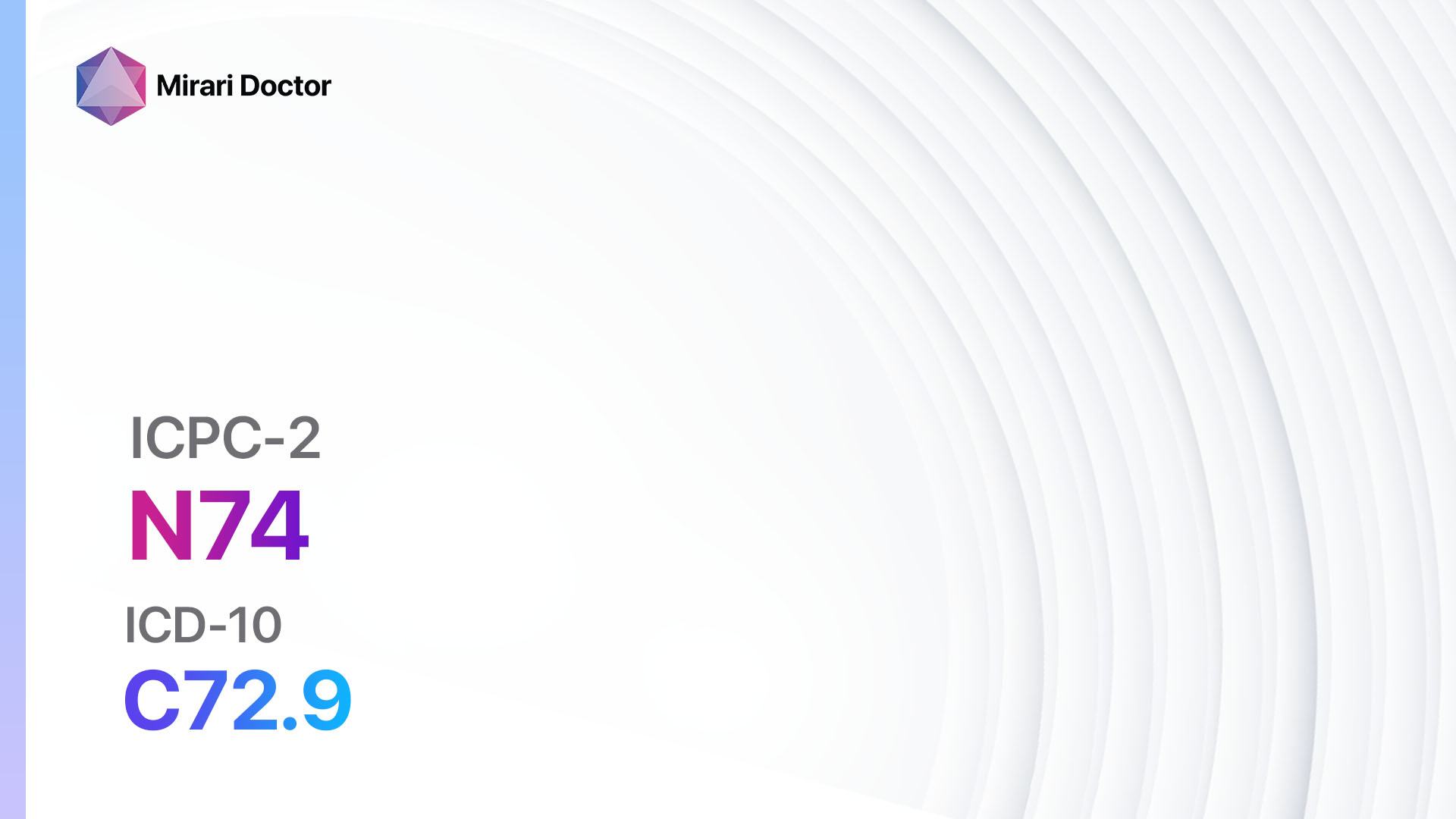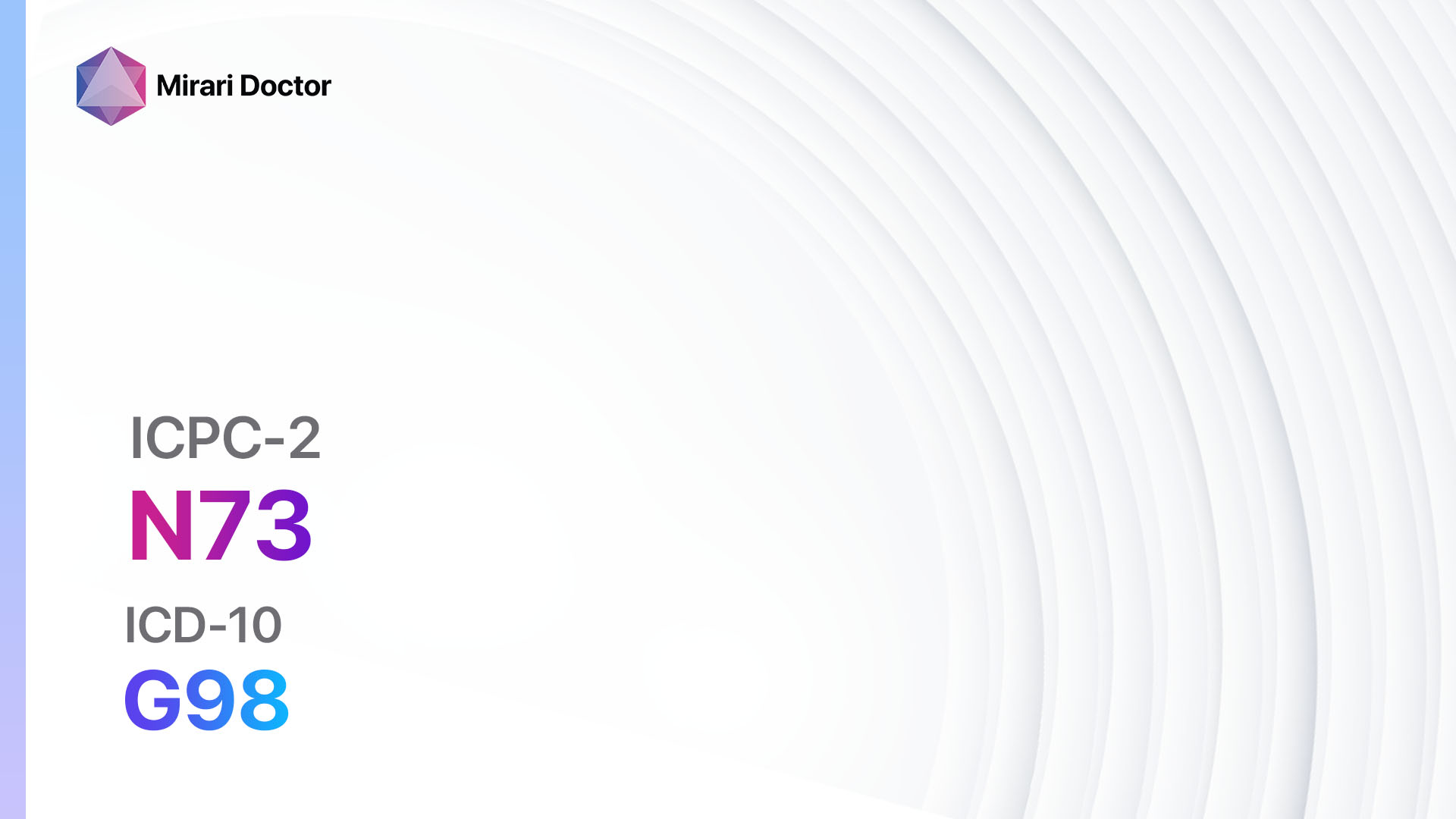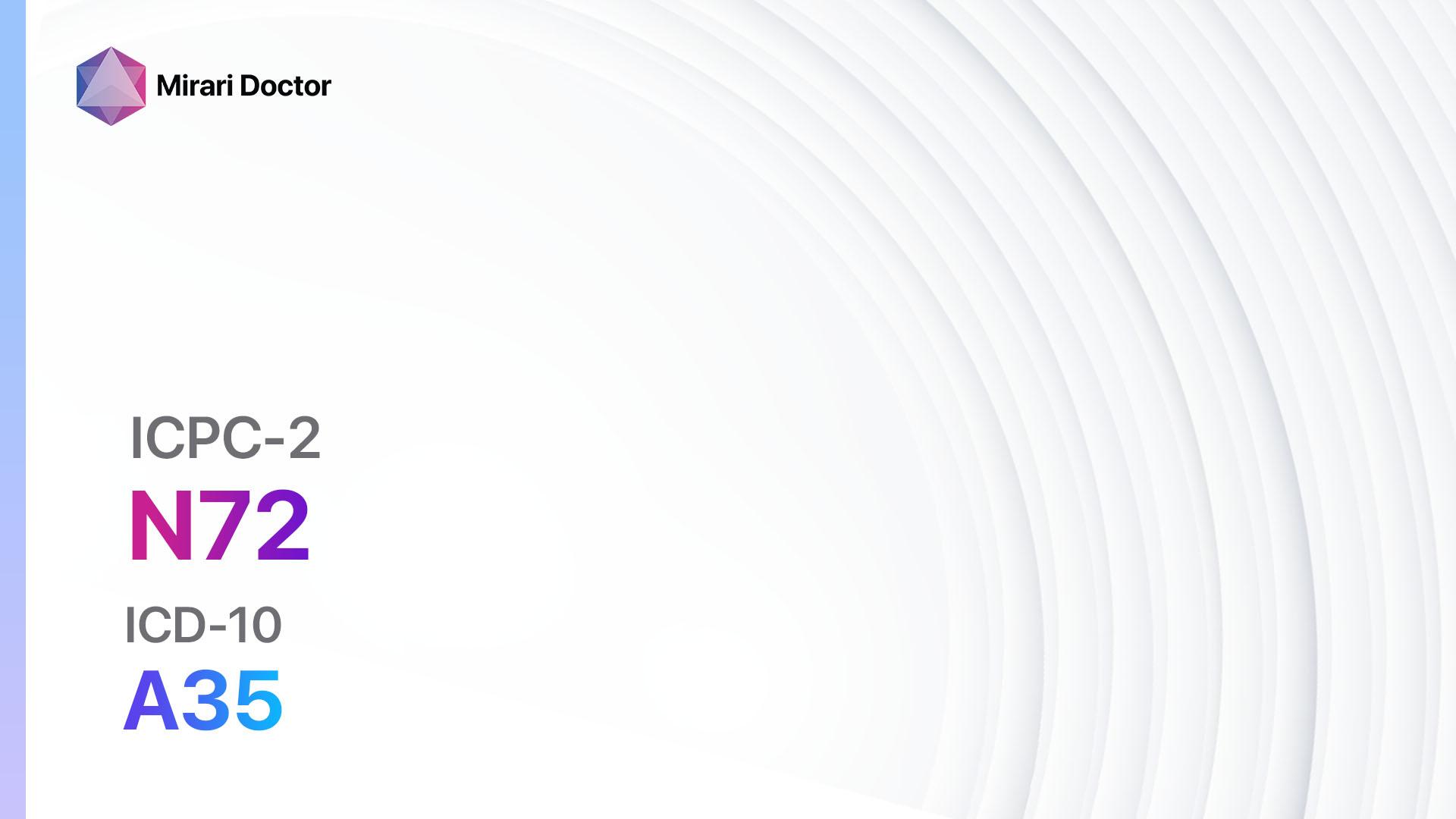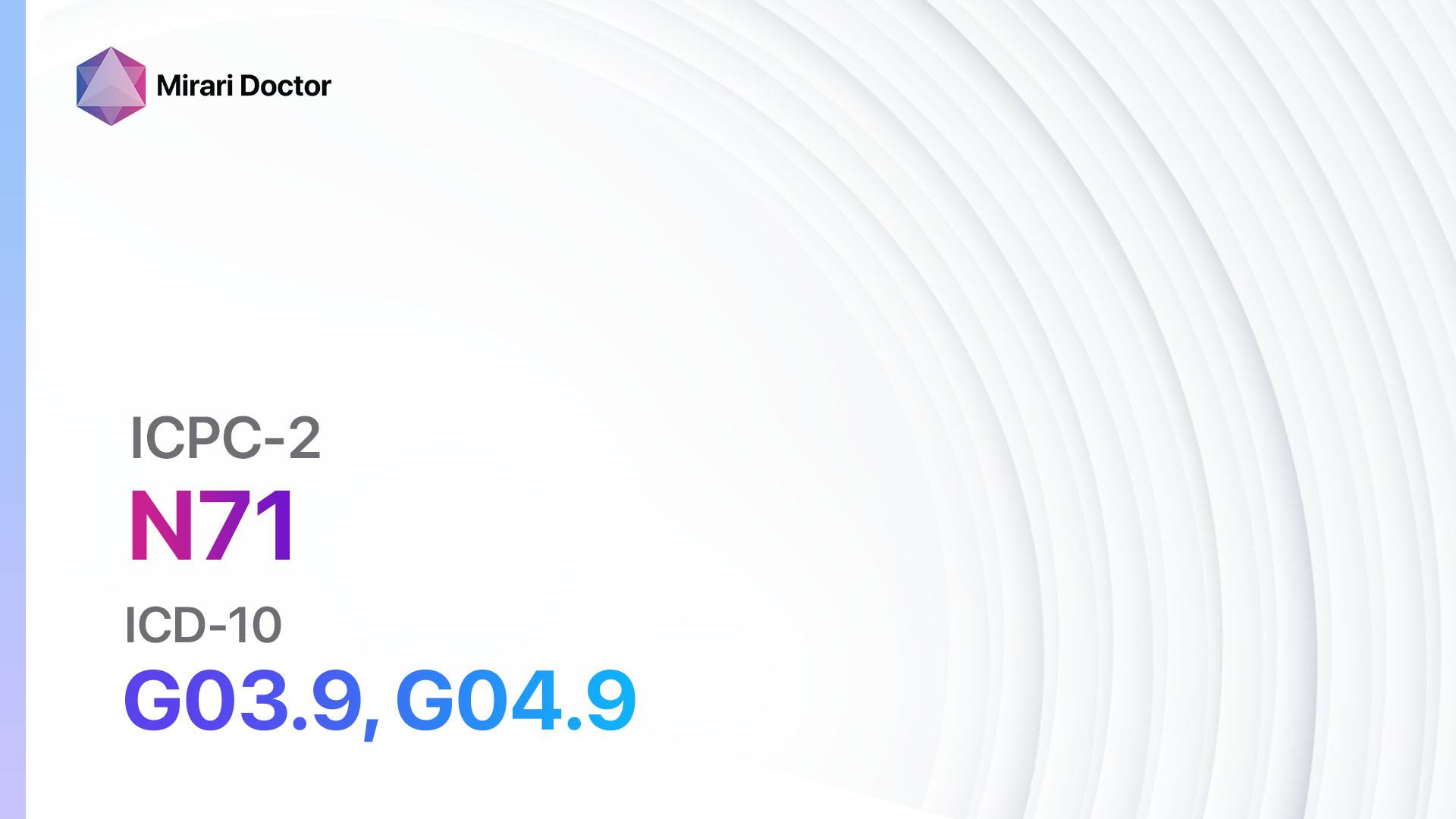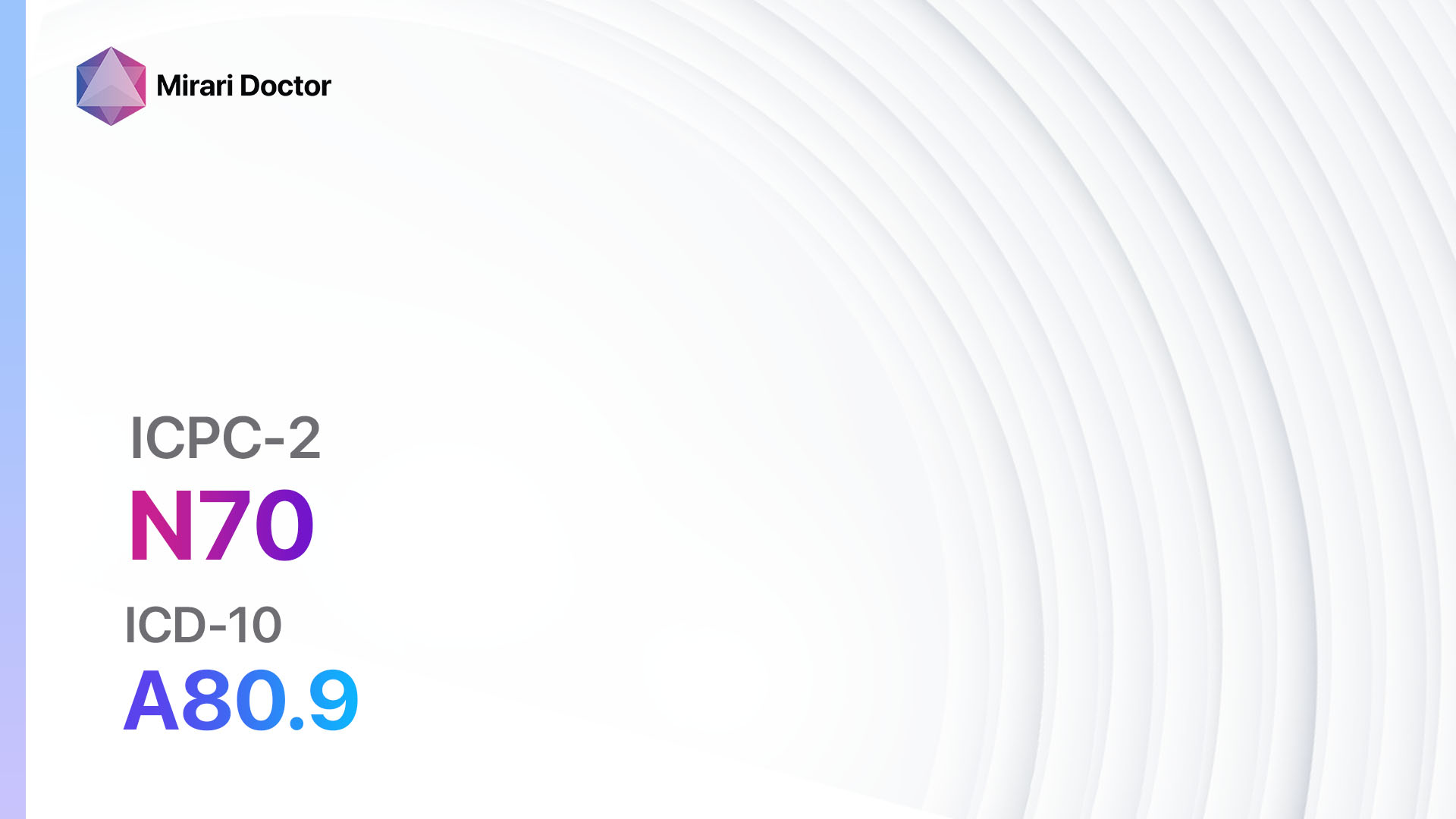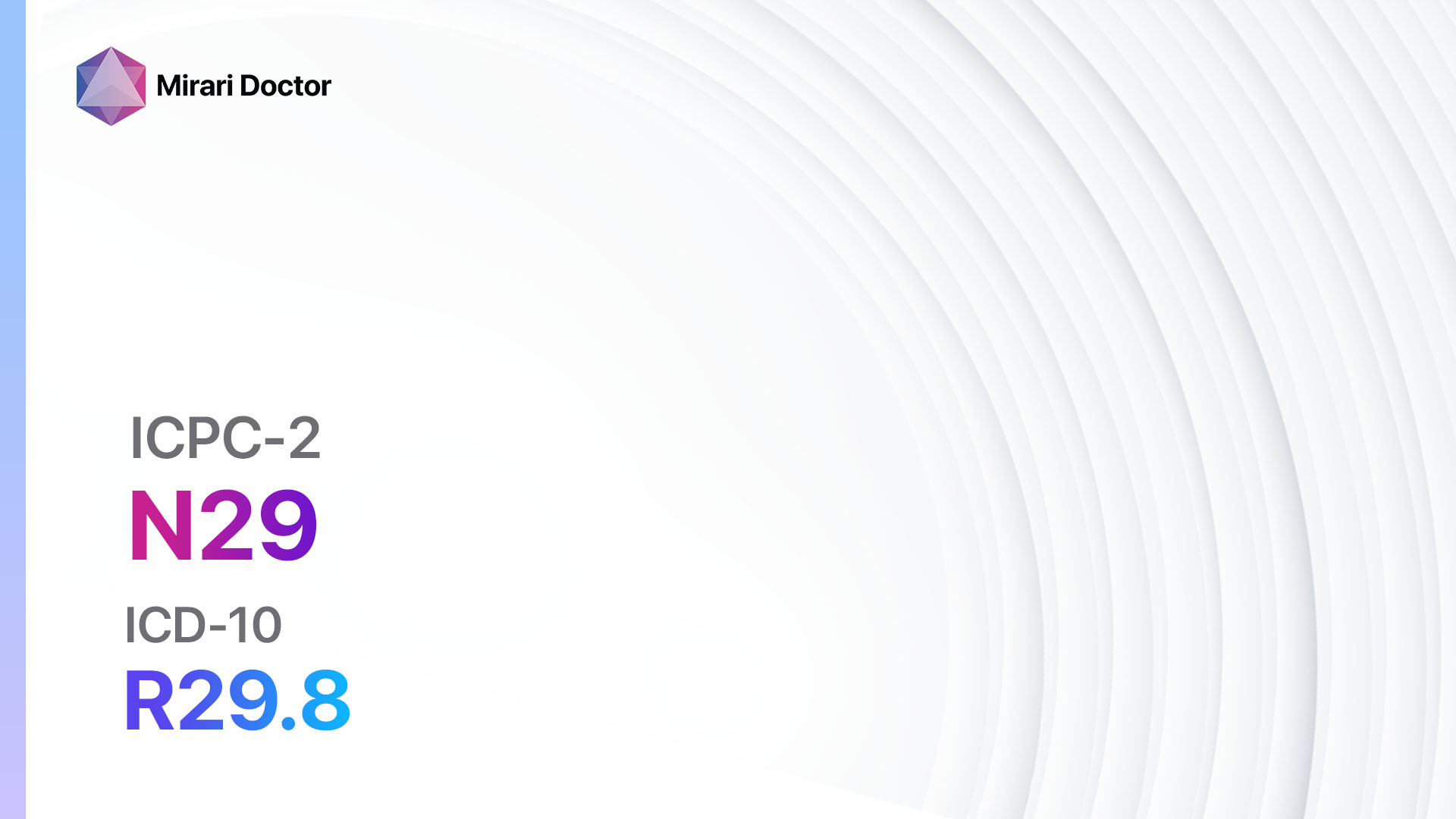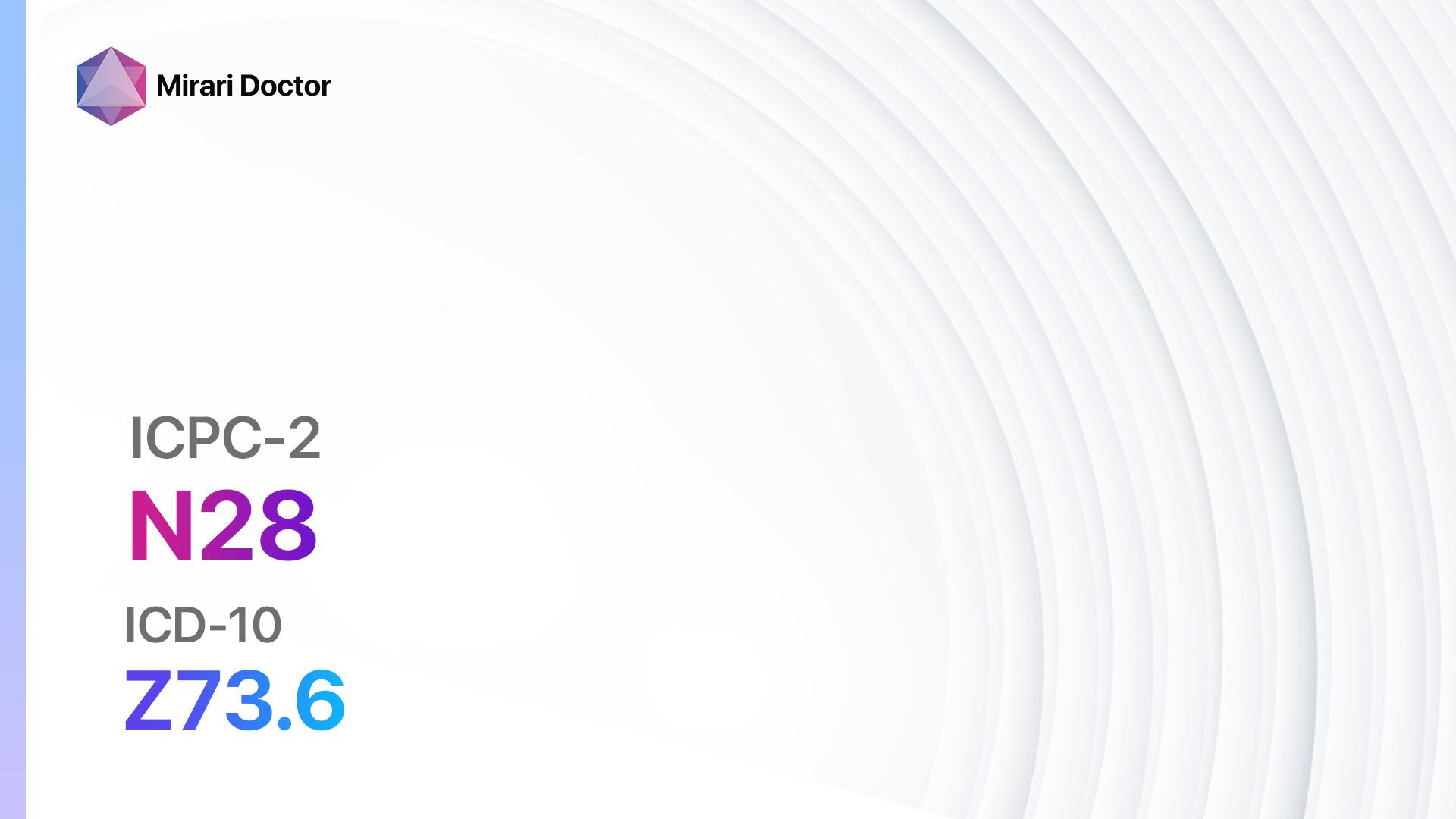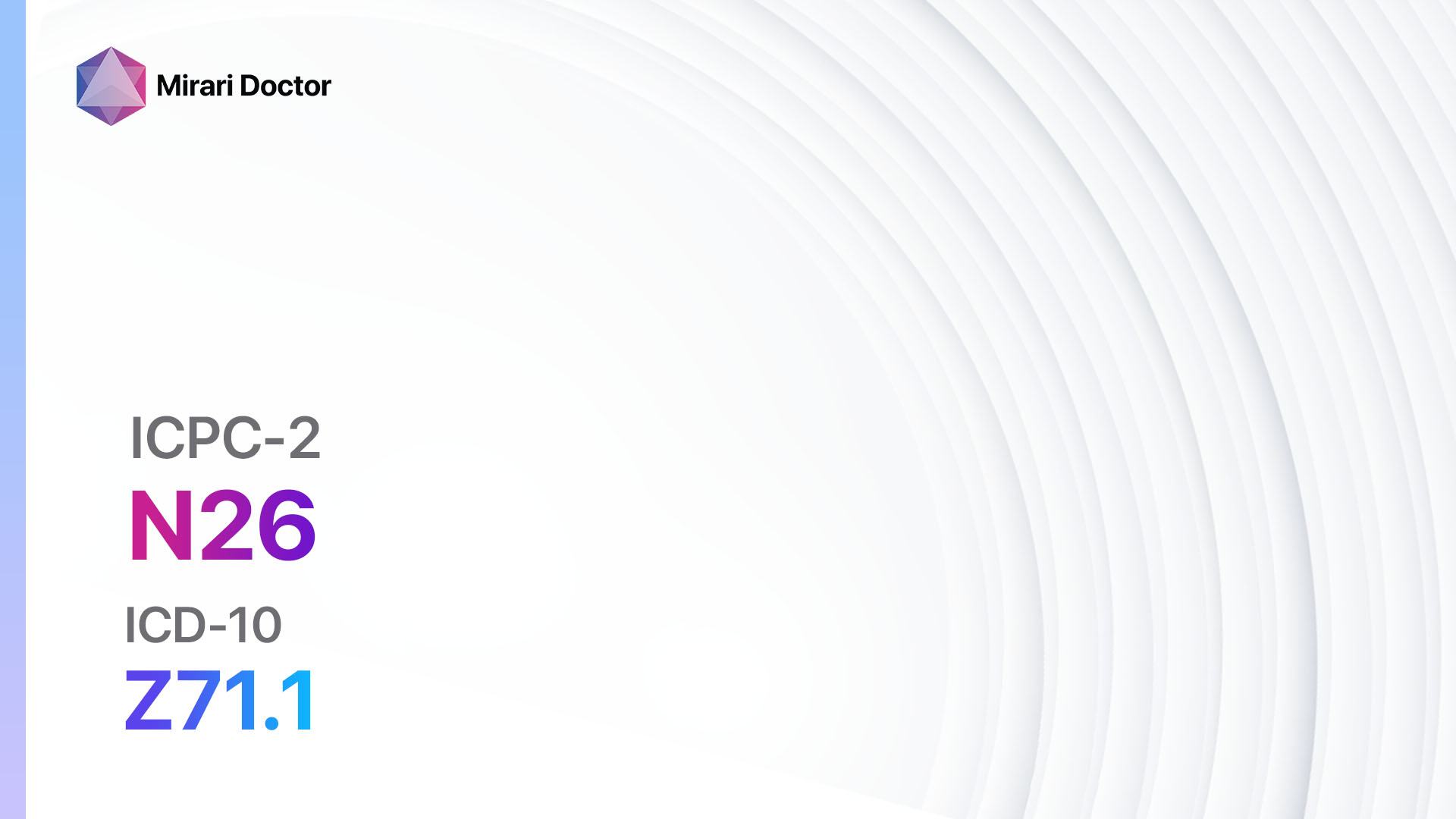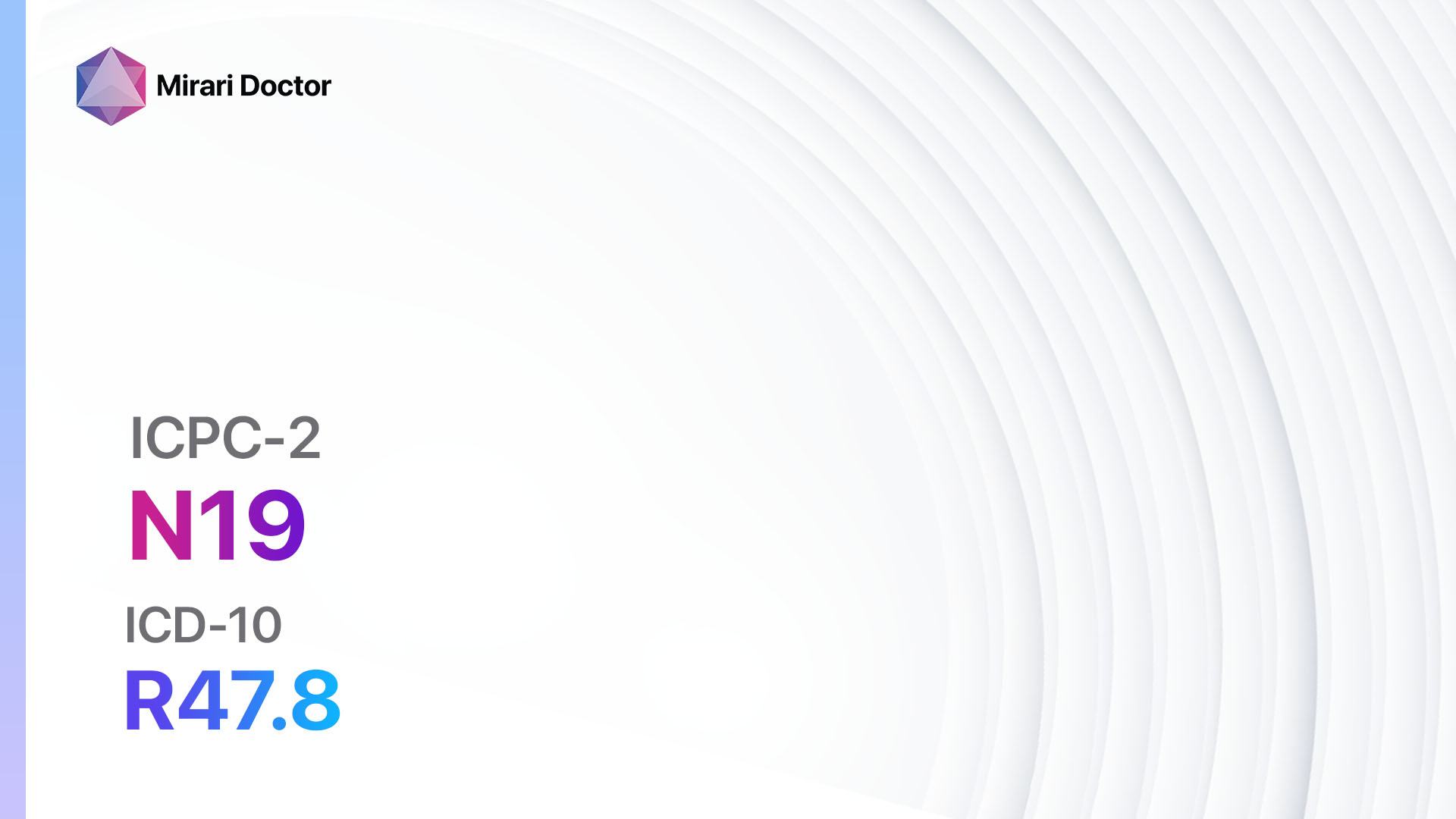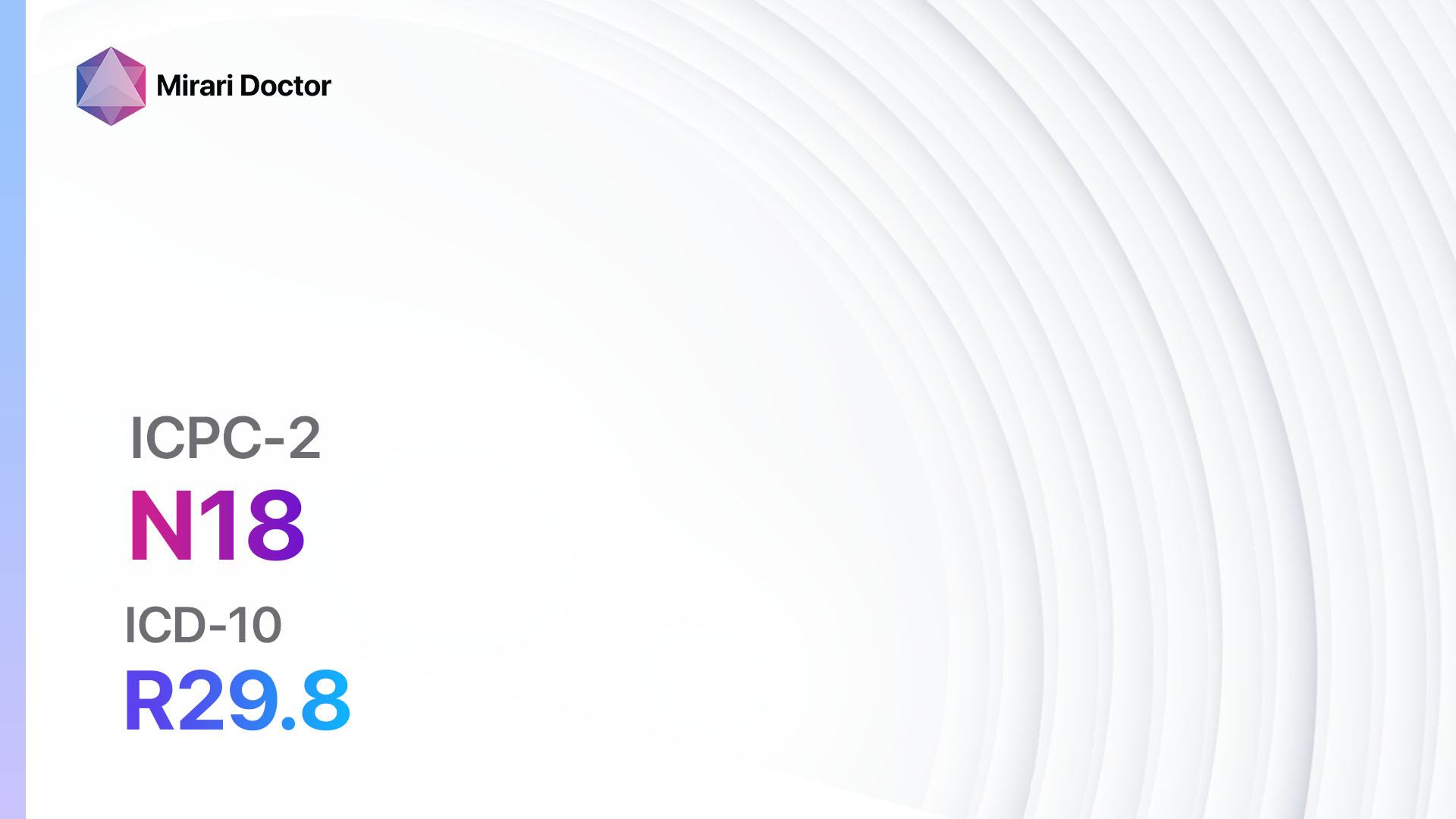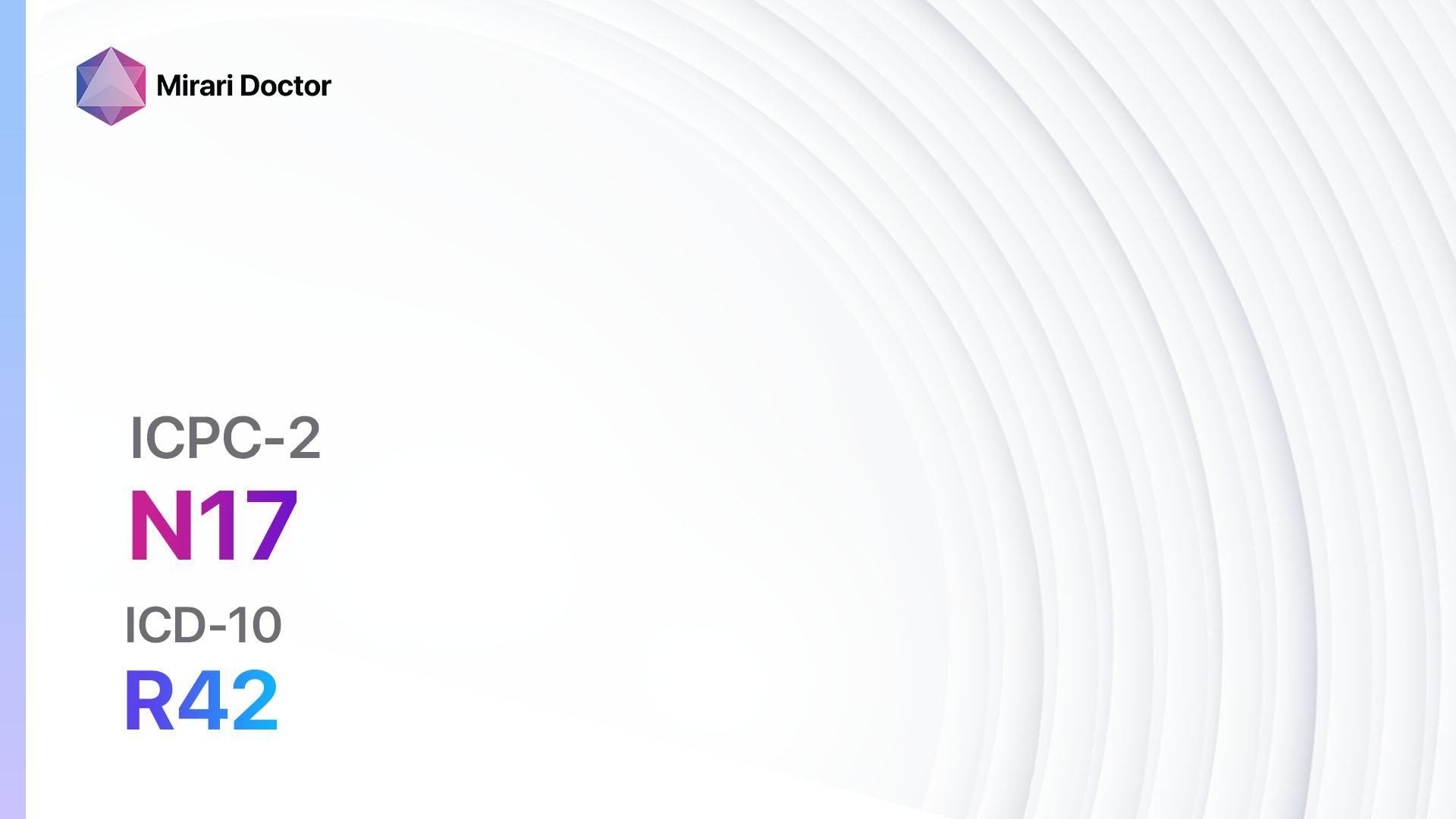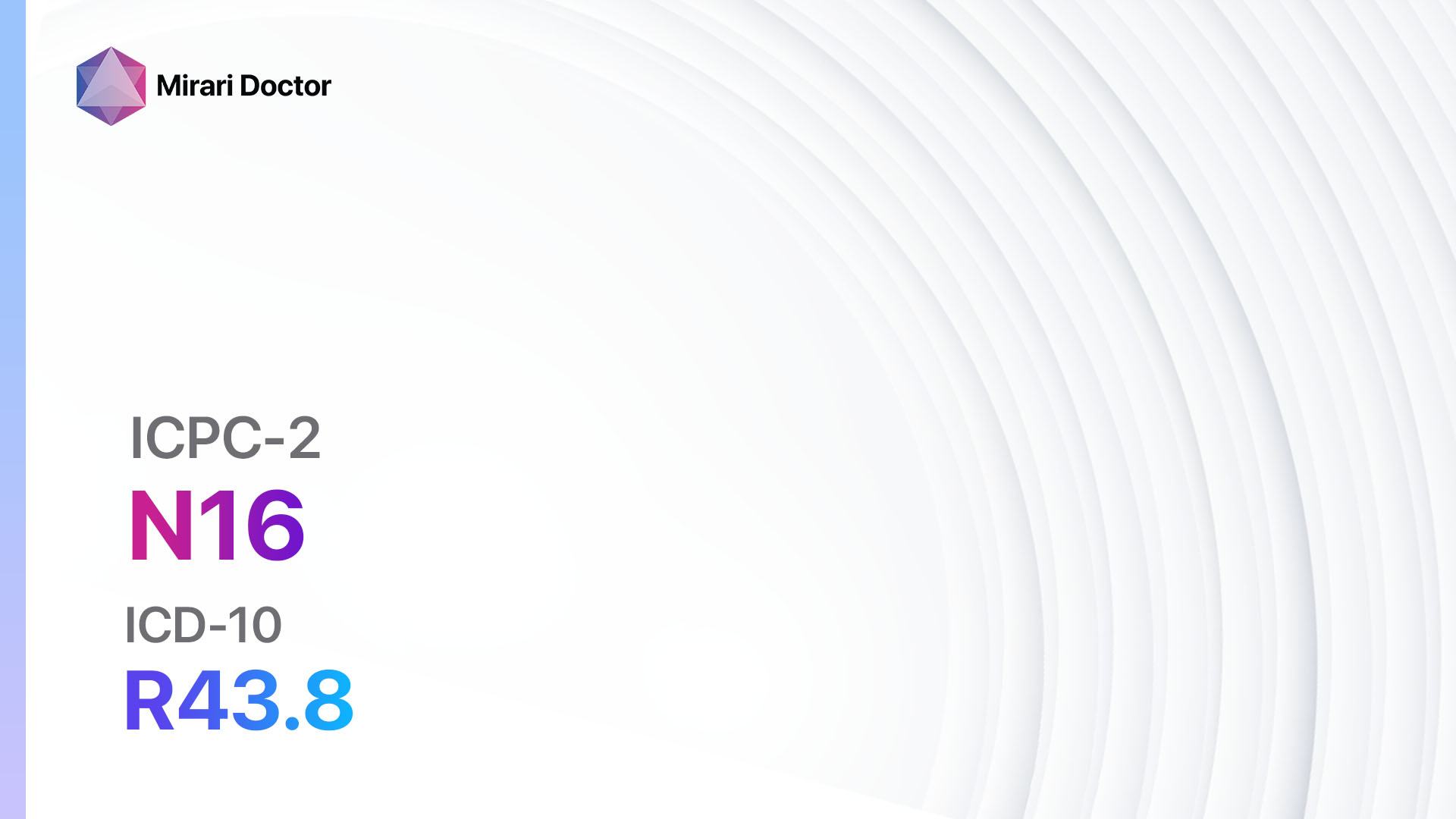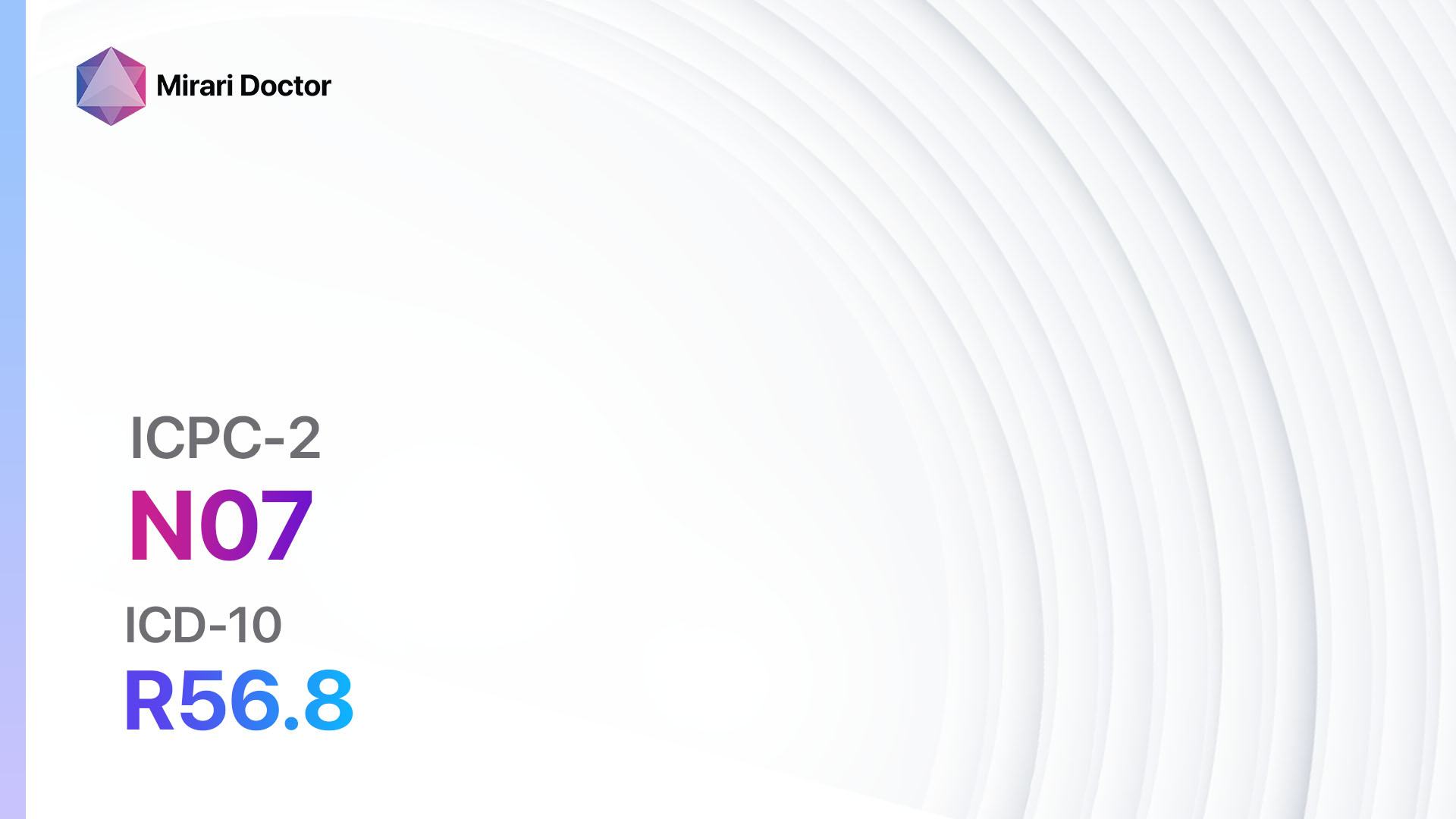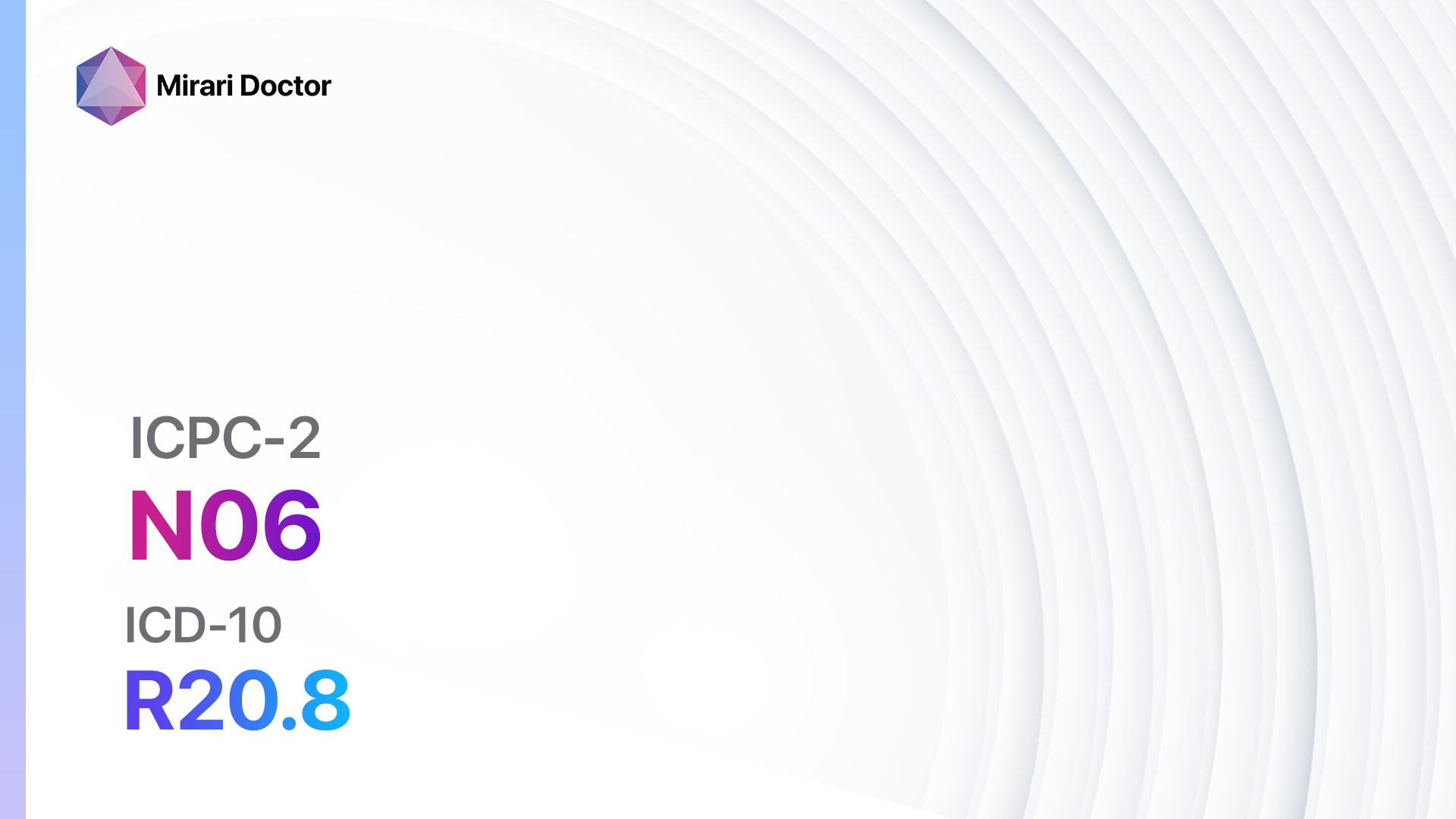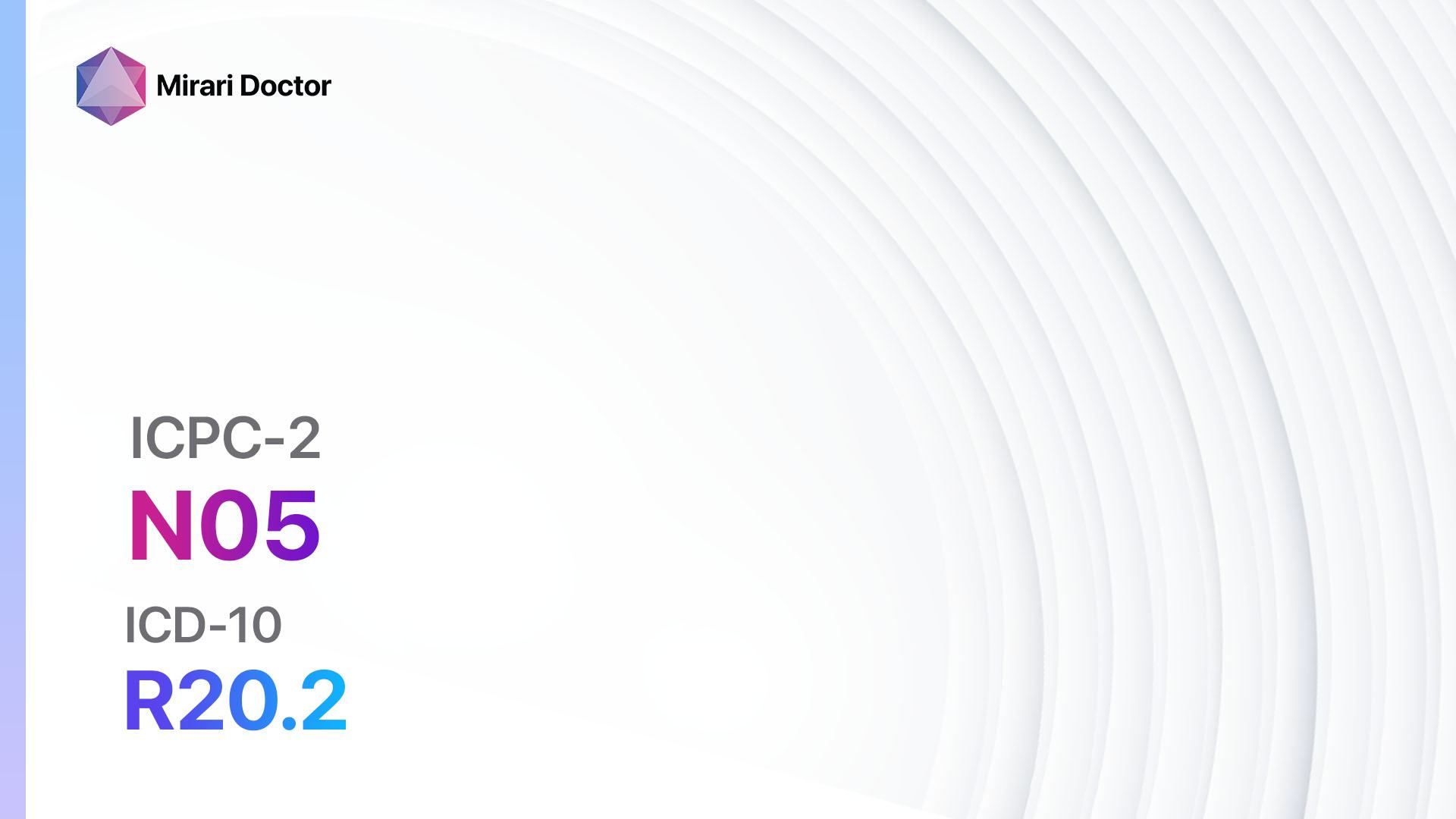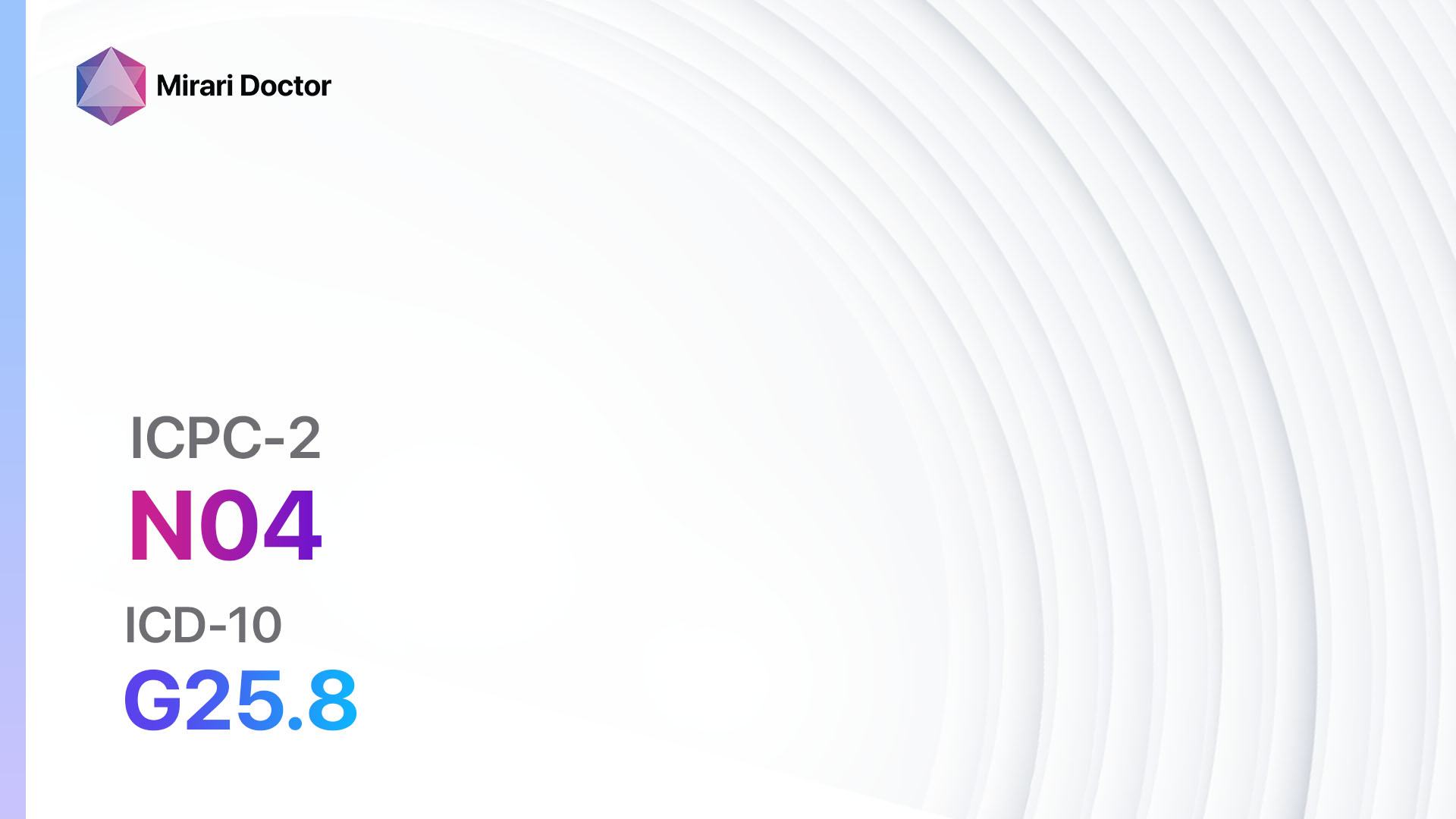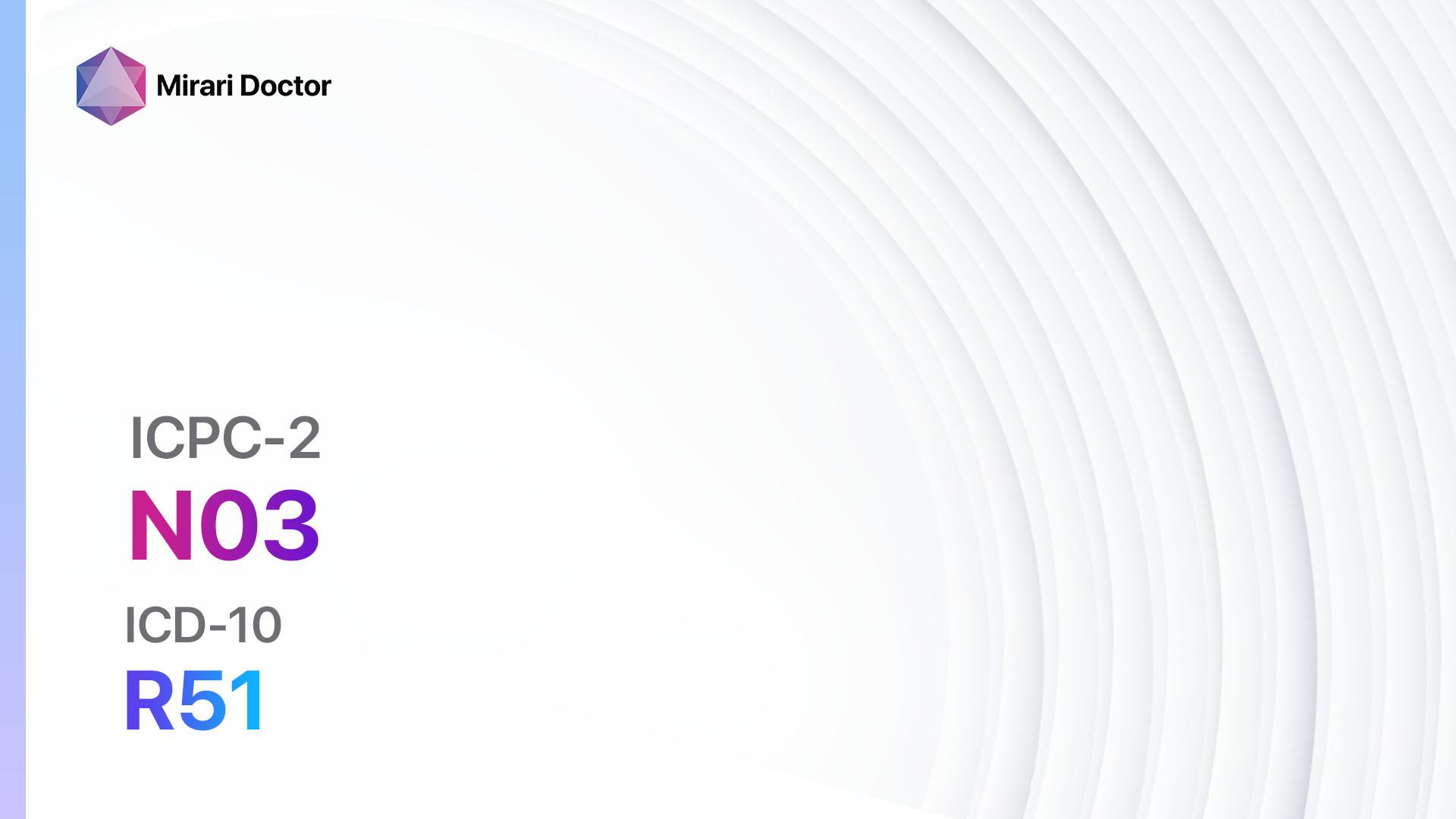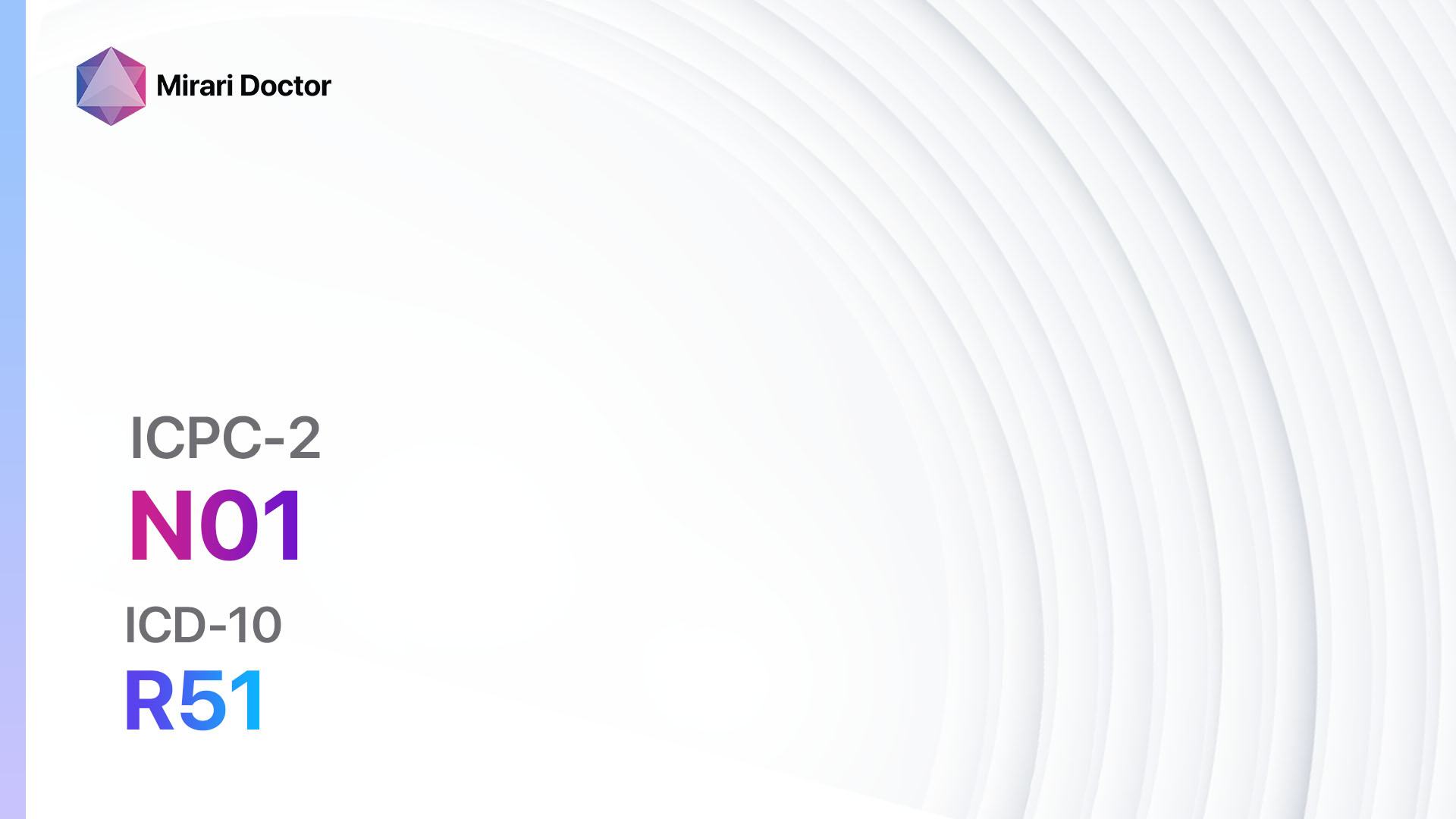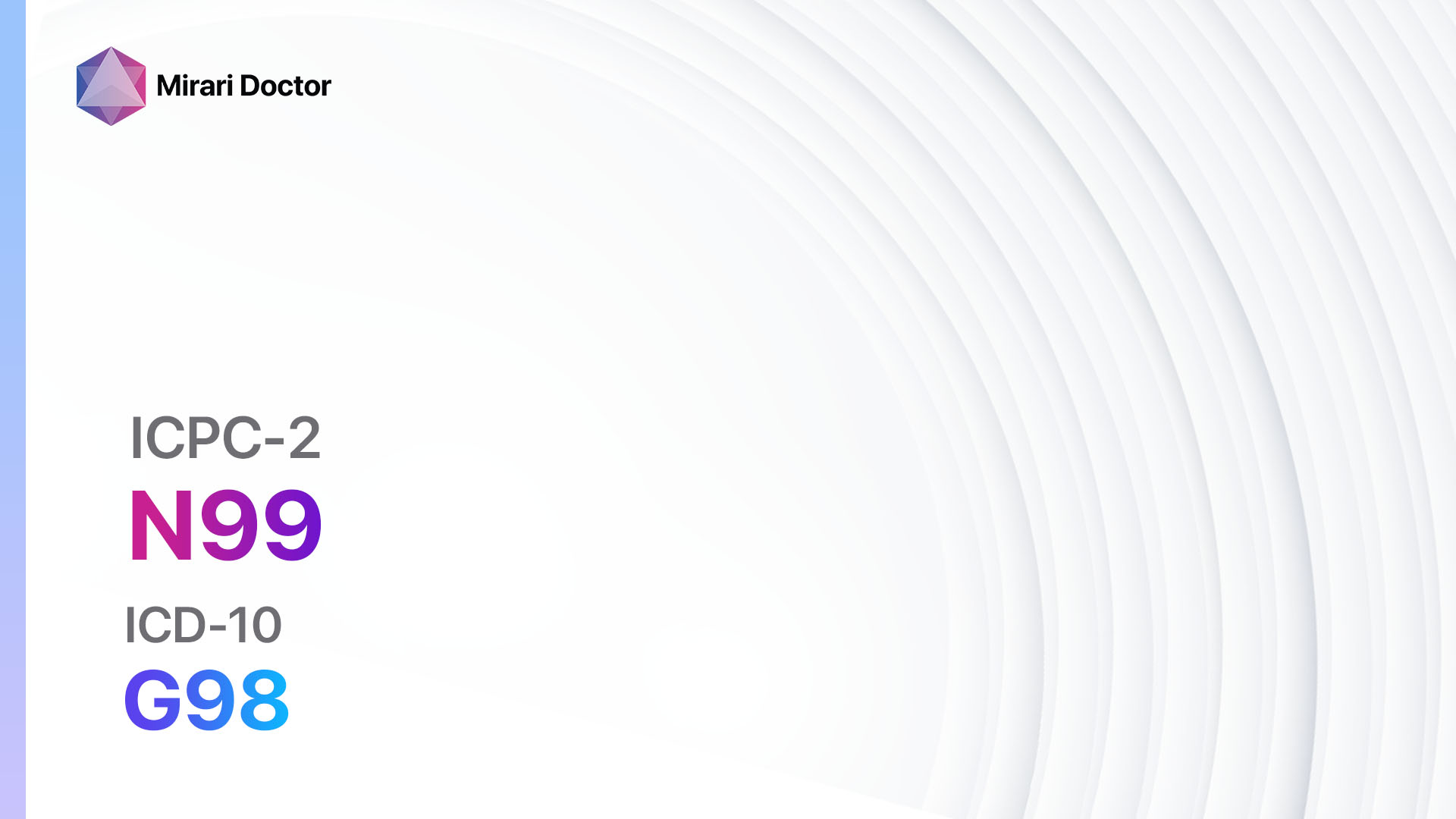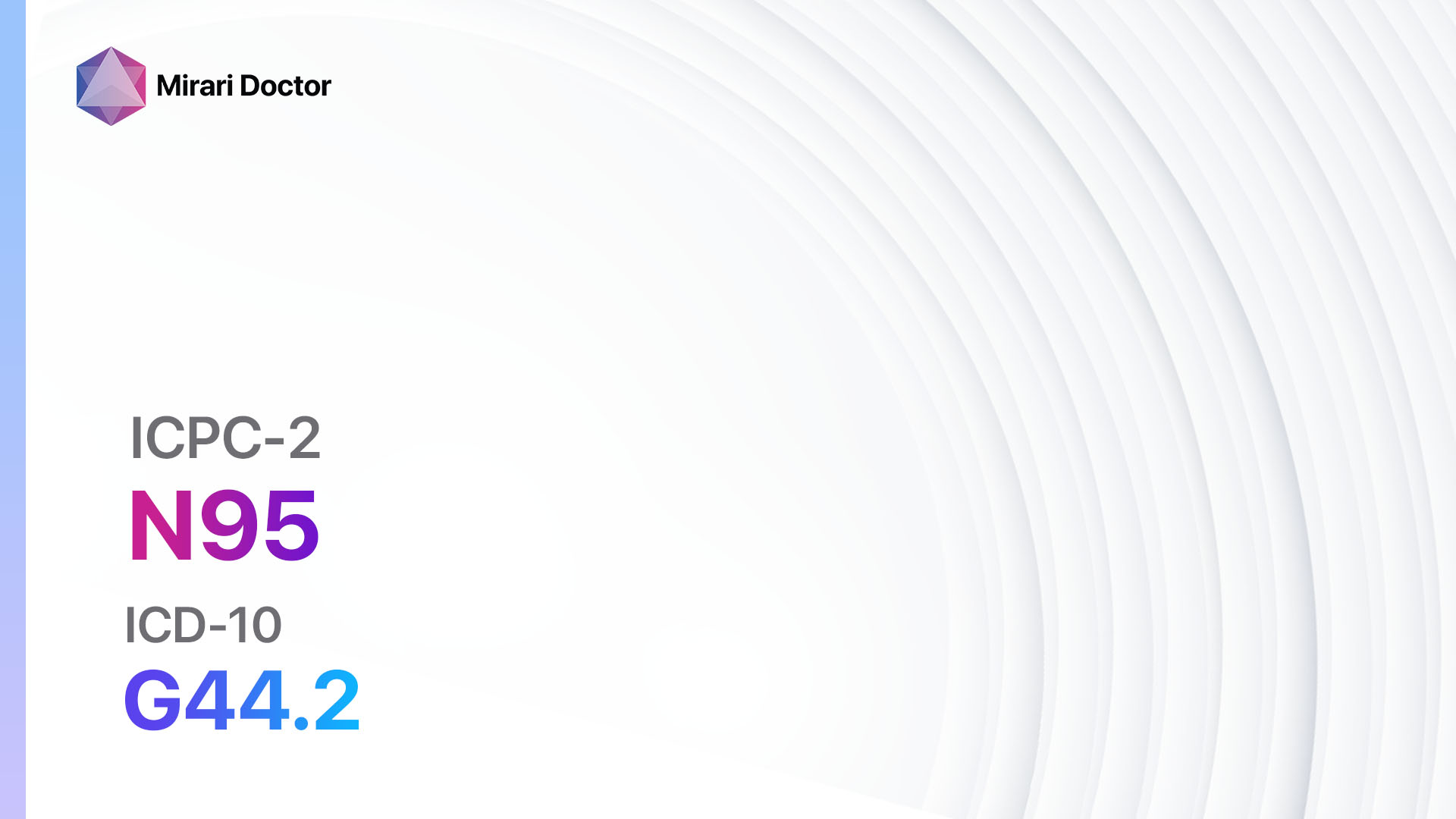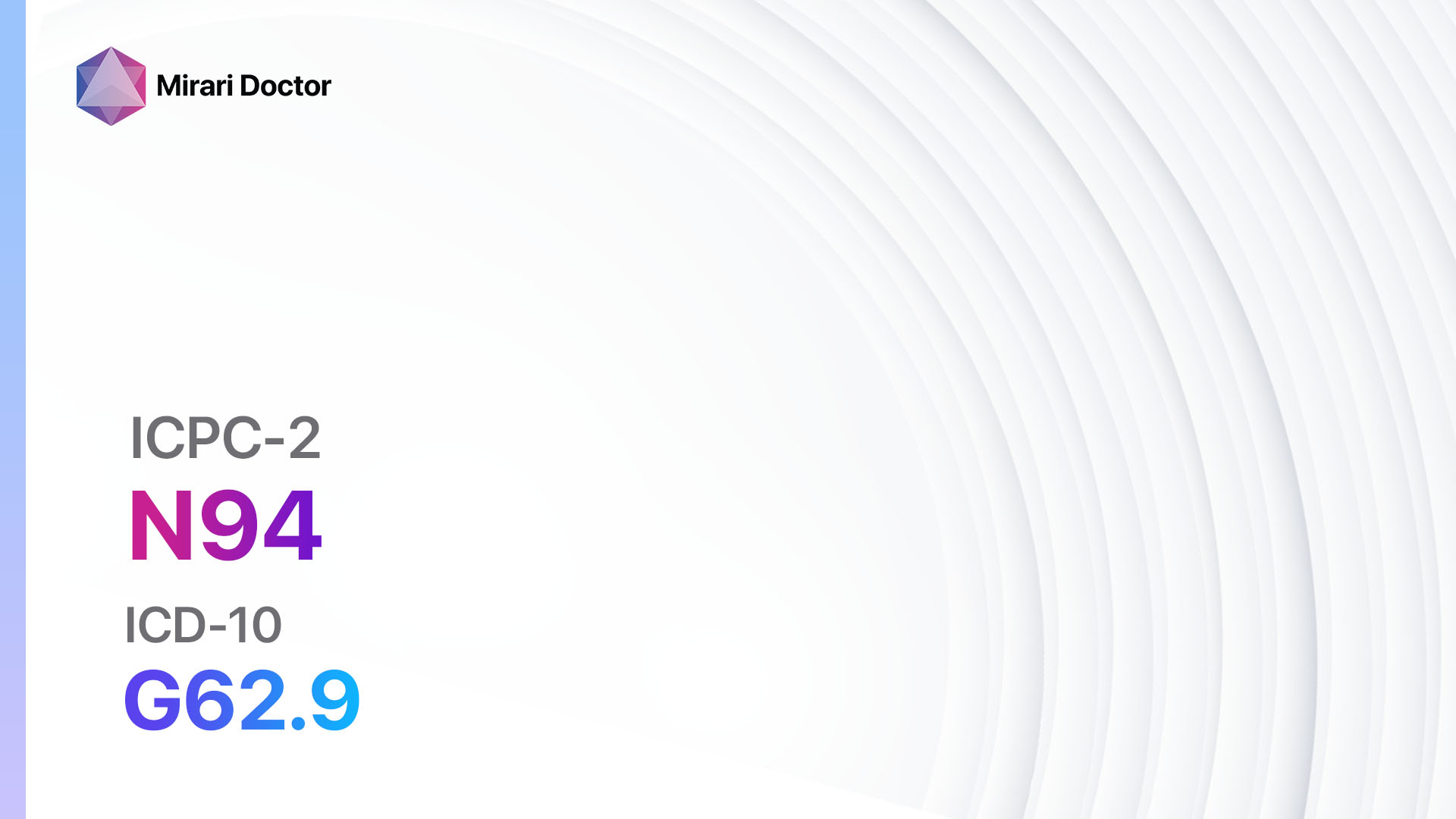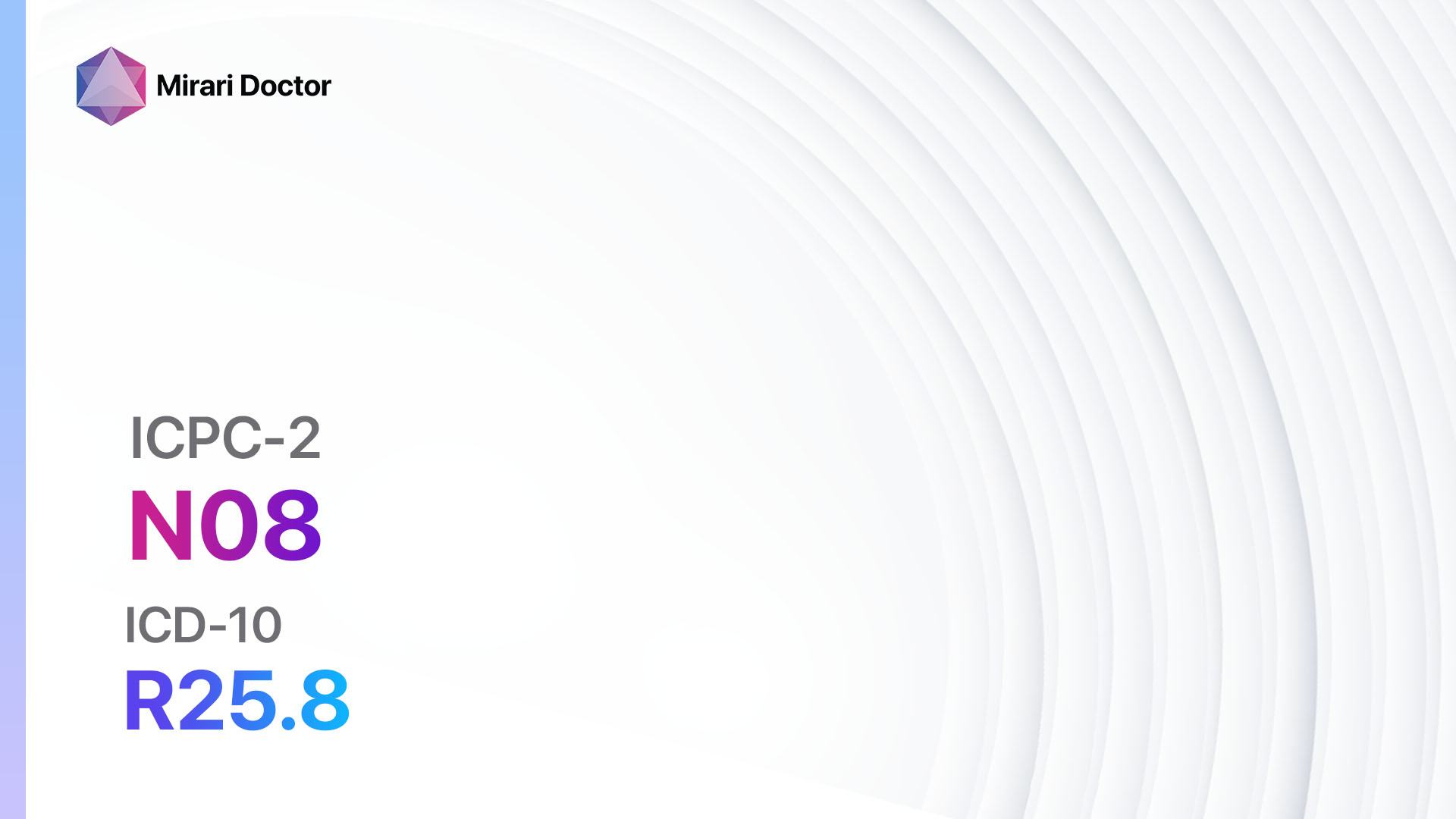
Introduction
Abnormal involuntary movements, also known as dyskinesia, refers to a group of movement disorders characterized by involuntary and abnormal movements. These movements can affect various parts of the body, including the face, limbs, and trunk[1]. Abnormal involuntary movements can significantly impact a person’s quality of life and daily functioning. The aim of this guide is to provide healthcare professionals with a comprehensive overview of the symptoms, causes, diagnostic steps, possible interventions, and patient education related to abnormal involuntary movements.
Codes
- ICPC-2 Code: N08 Abnormal involuntary movements
- ICD-10 Code: R25.8 Other and unspecified abnormal involuntary movements
Symptoms
- Involuntary movements: Patients may experience repetitive, jerky, or writhing movements that they have no control over[2].
- Tics: Patients may exhibit sudden, brief, and repetitive movements or sounds, such as blinking, throat clearing, or grunting[3].
- Chorea: Patients may display rapid, jerky, and involuntary movements that are unpredictable and random[4].
- Dystonia: Patients may have sustained muscle contractions that cause twisting or repetitive movements and abnormal postures[5].
- Tremors: Patients may experience rhythmic shaking or trembling movements, typically in the hands, but can also affect other body parts[6].
Causes
- Medications: Certain medications, such as antipsychotics, antiemetics, and anticonvulsants, can cause abnormal involuntary movements as a side effect[7].
- Neurological conditions: Conditions like Parkinson’s disease, Huntington’s disease, and Wilson’s disease can lead to abnormal involuntary movements[8].
- Genetic factors: Some individuals may have a genetic predisposition to develop abnormal involuntary movements[9].
- Brain injury: Traumatic brain injury or stroke can result in abnormal involuntary movements[10].
- Substance abuse: Long-term use of drugs like cocaine or amphetamines can cause abnormal involuntary movements.
Diagnostic Steps
Medical History
- Gather information about the patient’s symptoms, including the type of abnormal involuntary movements, their frequency, duration, and any triggering factors.
- Inquire about the patient’s medical history, including any previous diagnoses of neurological conditions or brain injuries.
- Ask about the patient’s medication history, including any recent changes or additions to their medication regimen.
- Assess the patient’s family history for any genetic conditions associated with abnormal involuntary movements.
Physical Examination
- Observe the patient’s movements and look for any abnormal involuntary movements, such as tics, chorea, dystonia, or tremors.
- Assess the patient’s muscle tone and strength.
- Perform a neurological examination to evaluate the patient’s reflexes, coordination, and sensory function.
- Check for any signs of other neurological conditions that may be causing the abnormal involuntary movements.
Laboratory Tests
- Complete blood count (CBC): To rule out any underlying infections or blood disorders that may be contributing to the abnormal involuntary movements.
- Comprehensive metabolic panel (CMP): To assess liver and kidney function, as well as electrolyte levels.
- Thyroid function tests: To evaluate thyroid hormone levels, as abnormalities in thyroid function can cause abnormal involuntary movements.
- Toxicology screen: To detect the presence of any substances, such as drugs or toxins, that may be causing the abnormal involuntary movements.
- Genetic testing: In certain cases, genetic testing may be warranted to identify any underlying genetic factors contributing to the abnormal involuntary movements.
Diagnostic Imaging
- Magnetic resonance imaging (MRI): To visualize the brain and rule out any structural abnormalities or lesions that may be causing the abnormal involuntary movements.
- Computed tomography (CT) scan: To provide detailed images of the brain and identify any abnormalities.
- Positron emission tomography (PET) scan: To assess brain activity and identify any areas of abnormal functioning.
- Electroencephalogram (EEG): To evaluate the electrical activity of the brain and detect any abnormalities.
Other Tests
- Video recording: In some cases, video recording of the abnormal involuntary movements may be helpful for further analysis and evaluation.
- Consultation with a neurologist: If the diagnosis remains unclear or if further expertise is needed, a referral to a neurologist may be necessary.
Follow-up and Patient Education
- Schedule regular follow-up appointments to monitor the progression of the abnormal involuntary movements and assess the effectiveness of interventions.
- Educate the patient about their condition, including the potential causes, treatment options, and lifestyle modifications that may help manage the symptoms.
- Provide resources and support groups for patients and their families to connect with others who may be experiencing similar challenges.
Possible Interventions
Traditional Interventions
Medications:
Top 5 drugs for abnormal involuntary movements:
- Antipsychotics (e.g., Haloperidol, Risperidone):
- Cost: Generic versions can range from $10 to $100 per month.
- Contraindications: Known hypersensitivity to antipsychotics, severe central nervous system depression.
- Side effects: Sedation, extrapyramidal symptoms, weight gain.
- Severe side effects: Neuroleptic malignant syndrome, tardive dyskinesia.
- Drug interactions: Other medications that cause sedation or interact with dopamine receptors.
- Warning: Regular monitoring for side effects and efficacy is necessary.
- Benzodiazepines (e.g., Diazepam, Clonazepam):
- Cost: Generic versions can range from $10 to $50 per month.
- Contraindications: Known hypersensitivity to benzodiazepines, severe respiratory insufficiency.
- Side effects: Sedation, drowsiness, impaired coordination.
- Severe side effects: Respiratory depression, dependence.
- Drug interactions: Other medications that cause sedation or interact with GABA receptors.
- Warning: Risk of dependence and withdrawal symptoms with long-term use.
- Dopamine receptor antagonists (e.g., Metoclopramide, Domperidone):
- Cost: Generic versions can range from $10 to $50 per month.
- Contraindications: Known hypersensitivity to dopamine receptor antagonists, gastrointestinal obstruction.
- Side effects: Restlessness, extrapyramidal symptoms, hyperprolactinemia.
- Severe side effects: Neuroleptic malignant syndrome, tardive dyskinesia.
- Drug interactions: Other medications that interact with dopamine receptors or prolong the QT interval.
- Warning: Regular monitoring for side effects and efficacy is necessary.
- Botulinum toxin injections (e.g., Botox):
- Cost: The cost can vary depending on the number of injections required, ranging from $300 to $1000 per treatment session.
- Contraindications: Known hypersensitivity to botulinum toxin, infection at the injection site.
- Side effects: Injection site pain, bruising, temporary muscle weakness.
- Severe side effects: Allergic reactions, difficulty swallowing or breathing.
- Drug interactions: None.
- Warning: Effects are temporary and repeat injections may be necessary.
- Anticonvulsants (e.g., Valproic acid, Carbamazepine):
- Cost: Generic versions can range from $10 to $100 per month.
- Contraindications: Known hypersensitivity to anticonvulsants, liver disease.
- Side effects: Sedation, dizziness, gastrointestinal upset.
- Severe side effects: Liver toxicity, blood disorders.
- Drug interactions: Other medications that interact with liver enzymes or affect the central nervous system.
- Warning: Regular monitoring of liver function and blood counts is necessary.
Alternative Drugs:
- Tetrabenazine: A medication specifically approved for the treatment of chorea associated with Huntington’s disease.
- Clonidine: May be used off-label to manage tics associated with abnormal involuntary movements.
- Levetiracetam: An anticonvulsant that may be effective in reducing abnormal movements.
- Amantadine: Can be used to manage dyskinesia associated with Parkinson’s disease.
- Baclofen: A muscle relaxant that may help reduce muscle spasms and dystonia.
Surgical Procedures:
- Deep brain stimulation (DBS): Involves the implantation of electrodes in specific areas of the brain to modulate abnormal electrical activity. Cost: $50,000 to $100,000.
- Thalamotomy: Surgical destruction of a small area of the thalamus to alleviate abnormal involuntary movements. Cost: $30,000 to $50,000.
Alternative Interventions
- Acupuncture: May help reduce abnormal involuntary movements and improve overall well-being. Cost: $60 to $120 per session.
- Biofeedback: Can teach patients to control their physiological responses and potentially reduce abnormal movements. Cost: $75 to $150 per session.
- Yoga: May improve muscle control, flexibility, and overall physical and mental well-being. Cost: Varies depending on the location and type of yoga class.
- Meditation: Can help reduce stress and promote relaxation, potentially leading to a decrease in abnormal involuntary movements. Cost: Varies depending on the type of meditation practice.
- Physical therapy: Focuses on improving muscle strength, coordination, and range of motion, which may help manage abnormal involuntary movements. Cost: Varies depending on the location and duration of therapy sessions.
Lifestyle Interventions
- Stress management: Encourage patients to develop stress management techniques, such as deep breathing exercises, mindfulness, or engaging in hobbies.
- Regular exercise: Engaging in regular physical activity can help improve muscle control and overall well-being. Cost: Varies depending on the type of exercise and location.
- Healthy diet: Encourage patients to follow a balanced diet rich in fruits, vegetables, whole grains, and lean proteins to support overall health.
- Adequate sleep: Emphasize the importance of getting enough sleep to promote overall well-being and reduce stress.
- Avoidance of triggers: Help patients identify and avoid any triggers that may worsen their abnormal involuntary movements, such as certain foods or medications.
It is important to note that the cost ranges provided are approximate and may vary depending on the location and availability of the interventions.
Mirari Cold Plasma Alternative Intervention
Understanding Mirari Cold Plasma
- Safe and Non-Invasive Treatment: Mirari Cold Plasma is a safe and non-invasive treatment option for various skin conditions. It does not require incisions, minimizing the risk of scarring, bleeding, or tissue damage.
- Efficient Extraction of Foreign Bodies: Mirari Cold Plasma facilitates the removal of foreign bodies from the skin by degrading and dissociating organic matter, allowing easier access and extraction.
- Pain Reduction and Comfort: Mirari Cold Plasma has a local analgesic effect, providing pain relief during the treatment, making it more comfortable for the patient.
- Reduced Risk of Infection: Mirari Cold Plasma has antimicrobial properties, effectively killing bacteria and reducing the risk of infection.
- Accelerated Healing and Minimal Scarring: Mirari Cold Plasma stimulates wound healing and tissue regeneration, reducing healing time and minimizing the formation of scars.
Mirari Cold Plasma Prescription
Video instructions for using Mirari Cold Plasma Device – N08 Abnormal involuntary movements (ICD-10:R25.8)
| Mild | Moderate | Severe |
| Mode setting: 2 (Wound Healing) Location: 0 (Localized) Morning: 15 minutes, Evening: 15 minutes |
Mode setting: 2 (Wound Healing) Location: 0 (Localized) Morning: 30 minutes, Lunch: 30 minutes, Evening: 30 minutes |
Mode setting: 2 (Wound Healing) Location: 0 (Localized) Morning: 30 minutes, Lunch: 30 minutes, Evening: 30 minutes |
| Mode setting: 7 (Immunotherapy) Location: 1 (Sacrum) Morning: 15 minutes, Evening: 15 minutes |
Mode setting: 7 (Immunotherapy) Location: 1 (Sacrum) Morning: 30 minutes, Lunch: 30 minutes, Evening: 30 minutes |
Mode setting: 7 (Immunotherapy) Location: 1 (Sacrum) Morning: 30 minutes, Lunch: 30 minutes, Evening: 30 minutes |
| Mode setting: 7 (Immunotherapy) Location: 7 (Neuro system & ENT) Morning: 15 minutes, Evening: 15 minutes |
Mode setting: 7 (Immunotherapy) Location: 7 (Neuro system & ENT) Morning: 30 minutes, Lunch: 30 minutes, Evening: 30 minutes |
Mode setting: 7 (Immunotherapy) Location: 7 (Neuro system & ENT) Morning: 30 minutes, Lunch: 30 minutes, Evening: 30 minutes |
| Mode setting: 7 (Immunotherapy) Location: 7 (Neuro system & ENT) Morning: 15 minutes, Evening: 15 minutes |
Mode setting: 7 (Immunotherapy) Location: 7 (Neuro system & ENT) Morning: 30 minutes, Lunch: 30 minutes, Evening: 30 minutes |
Mode setting: 7 (Immunotherapy) Location: 7 (Neuro system & ENT) Morning: 30 minutes, Lunch: 30 minutes, Evening: 30 minutes |
| Total Morning: 60 minutes approx. $10 USD, Evening: 60 minutes approx. $10 USD |
Total Morning: 120 minutes approx. $20 USD, Lunch: 120 minutes approx. $20 USD, Evening: 120 minutes approx. $20 USD, |
Total Morning: 120 minutes approx. $20 USD, Lunch: 120 minutes approx. $20 USD, Evening: 120 minutes approx. $20 USD, |
| Usual treatment for 7-60 days approx. $140 USD – $1200 USD | Usual treatment for 6-8 weeks approx. $2,520 USD – $3,360 USD |
Usual treatment for 3-6 months approx. $5,400 USD – $10,800 USD
|
 |
|
Use the Mirari Cold Plasma device to treat Abnormal involuntary movements effectively.
WARNING: MIRARI COLD PLASMA IS DESIGNED FOR THE HUMAN BODY WITHOUT ANY ARTIFICIAL OR THIRD PARTY PRODUCTS. USE OF OTHER PRODUCTS IN COMBINATION WITH MIRARI COLD PLASMA MAY CAUSE UNPREDICTABLE EFFECTS, HARM OR INJURY. PLEASE CONSULT A MEDICAL PROFESSIONAL BEFORE COMBINING ANY OTHER PRODUCTS WITH USE OF MIRARI.
Step 1: Cleanse the Skin
- Start by cleaning the affected area of the skin with a gentle cleanser or mild soap and water. Gently pat the area dry with a clean towel.
Step 2: Prepare the Mirari Cold Plasma device
- Ensure that the Mirari Cold Plasma device is fully charged or has fresh batteries as per the manufacturer’s instructions. Make sure the device is clean and in good working condition.
- Switch on the Mirari device using the power button or by following the specific instructions provided with the device.
- Some Mirari devices may have adjustable settings for intensity or treatment duration. Follow the manufacturer’s instructions to select the appropriate settings based on your needs and the recommended guidelines.
Step 3: Apply the Device
- Place the Mirari device in direct contact with the affected area of the skin. Gently glide or hold the device over the skin surface, ensuring even coverage of the area experiencing.
- Slowly move the Mirari device in a circular motion or follow a specific pattern as indicated in the user manual. This helps ensure thorough treatment coverage.
Step 4: Monitor and Assess:
- Keep track of your progress and evaluate the effectiveness of the Mirari device in managing your Abnormal involuntary movements. If you have any concerns or notice any adverse reactions, consult with your health care professional.
Note
This guide is for informational purposes only and should not replace the advice of a medical professional. Always consult with your healthcare provider or a qualified medical professional for personal advice, diagnosis, or treatment. Do not solely rely on the information presented here for decisions about your health. Use of this information is at your own risk. The authors of this guide, nor any associated entities or platforms, are not responsible for any potential adverse effects or outcomes based on the content.
Mirari Cold Plasma System Disclaimer
- Purpose: The Mirari Cold Plasma System is a Class 2 medical device designed for use by trained healthcare professionals. It is registered for use in Thailand and Vietnam. It is not intended for use outside of these locations.
- Informational Use: The content and information provided with the device are for educational and informational purposes only. They are not a substitute for professional medical advice or care.
- Variable Outcomes: While the device is approved for specific uses, individual outcomes can differ. We do not assert or guarantee specific medical outcomes.
- Consultation: Prior to utilizing the device or making decisions based on its content, it is essential to consult with a Certified Mirari Tele-Therapist and your medical healthcare provider regarding specific protocols.
- Liability: By using this device, users are acknowledging and accepting all potential risks. Neither the manufacturer nor the distributor will be held accountable for any adverse reactions, injuries, or damages stemming from its use.
- Geographical Availability: This device has received approval for designated purposes by the Thai and Vietnam FDA. As of now, outside of Thailand and Vietnam, the Mirari Cold Plasma System is not available for purchase or use.
References
- Jankovic, J. (2009). Treatment of hyperkinetic movement disorders. The Lancet Neurology, 8(9), 844-856.
- Fahn, S., Jankovic, J., & Hallett, M. (2011). Principles and practice of movement disorders. Elsevier Health Sciences.
- Leckman, J. F., & Cohen, D. J. (1999). Tourette’s syndrome—tics, obsessions, compulsions: Developmental psychopathology and clinical care. John Wiley & Sons.
- Walker, R. H. (2011). Differential diagnosis of chorea. Current neurology and neuroscience reports, 11(4), 385-395.
- Albanese, A., Bhatia, K., Bressman, S. B., DeLong, M. R., Fahn, S., Fung, V. S., … & Teller, J. K. (2013). Phenomenology and classification of dystonia: a consensus update. Movement disorders, 28(7), 863-873.
- Deuschl, G., Bain, P., & Brin, M. (1998). Consensus statement of the Movement Disorder Society on tremor. Movement Disorders, 13(S3), 2-23.
- Cornett, E. M., Novitch, M., Kaye, A. D., Kata, V., & Kaye, A. M. (2017). Medication-induced tardive dyskinesia: a review and update. Ochsner Journal, 17(2), 162-174.
- Jankovic, J., & Tolosa, E. (Eds.). (2007). Parkinson’s disease and movement disorders. Lippincott Williams & Wilkins.
- Gasser, T. (2009). Mendelian forms of Parkinson’s disease. Biochimica et Biophysica Acta (BBA)-Molecular Basis of Disease, 1792(7), 587-596.
- Krauss, J. K., Jankovic, J., & Grossman, R. G. (2001). Surgery for Parkinson’s disease and movement disorders. Lippincott Williams & Wilkins.
Related articles
Made in USA


